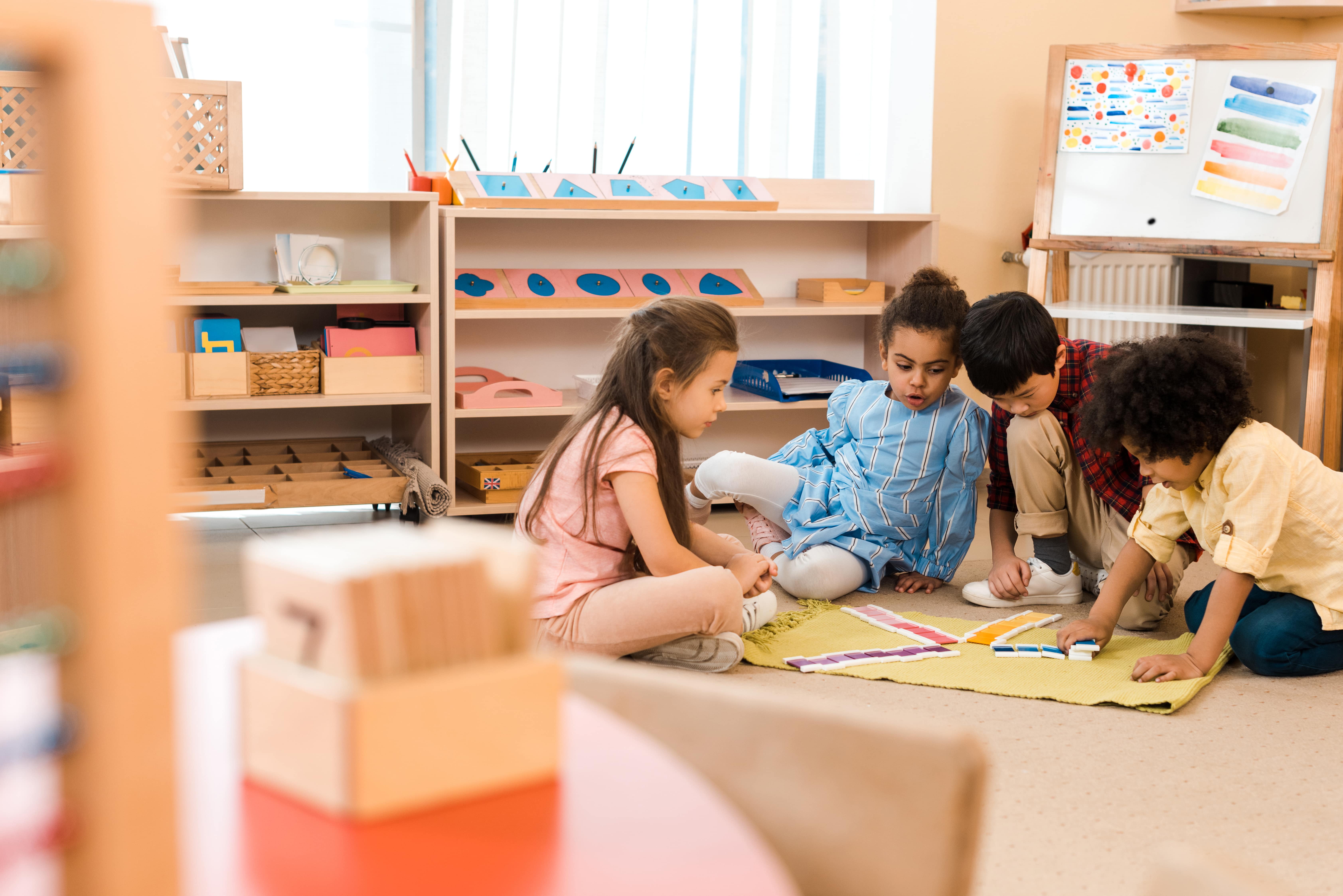As parents, you likely notice how emotions play a huge role in your child’s daily life, whether it’s joy over a favourite toy or frustration when a sibling won’t share. These emotional experiences aren’t just fleeting moments; they’re key opportunities for learning and growth.
Here at BrightPath, we focus on fostering emotional intelligence through our unique BeeCurious Curriculum, using our Building Connections approach, which emphasizes social-emotional learning (SEL) as an integral part of early childhood development.
Read on to learn how cultivating emotional intelligence helps children build essential skills for life.
What Is Emotional Literacy and Why Is It Important?
In the BeeCurious Curriculum framework, emotional literacy is defined as the ability to recognize, understand, and label emotions. It’s the foundation for learning how to manage feelings and build meaningful relationships with others. Emotional literacy begins with helping children identify their emotions and recognize the conditions that might trigger strong reactions.
Why It Matters:
- Self-Regulation: Understanding their own emotions helps children develop coping and problem-solving skills, allowing them to return to a calm, learning-ready state after a challenging moment.
- Communication: Emotional literacy improves children’s ability to express their feelings and needs clearly, reducing frustration and misunderstandings.
- Conflict Resolution: Recognizing and articulating emotions helps children navigate disagreements with peers more effectively.
- Empathy and Resilience: Children learn to understand what others are experiencing and overcome their own challenges, developing a sense of capability and confidence.
Activities That Promote Emotional Intelligence
Emotional literacy is a skill that is practiced and developed; it can be cultivated through intentional, interactive activities. Here are some examples of activities we use in our classrooms:
Guidance Strategies
Educators acknowledge children’s feelings and validate them. For instance, if a child appears upset after a toy conflict, an educator might say, “I see that you’re feeling frustrated because you wanted a turn. Let’s talk about it.” This approach not only helps the child feel heard but also models problem-solving.
Gathering Circles
Through activities like Buzz Breathing, children practice yoga poses alongside deep, mindful breaths. This anxiety-reducing strategy helps children self-soothe during heightened emotional states, giving them a valuable tool they can use throughout life.
Creative Self-Expression
Children use mirrors and loose parts to create art that reflects different emotions. This hands-on activity often leads to rich conversations about feelings, helping children explore and articulate their emotional experiences.
Storytelling with a Twist
Using storytelling stones painted with different emotions, children create imaginative narratives. This fosters empathy as they discuss scenarios that evoke joy, sadness, or anger.
Mirror Play and Role-Playing
Children practice recognizing and mimicking emotions with mirrors or through dramatic play. For instance, making a “surprised face” and guessing each other’s feelings builds both empathy and self-awareness.
Building Empathy and Self-Regulation
Teaching empathy and self-regulation is central to emotional intelligence. At BrightPath, educators use strategies like:
- Matching Activities: Photos of children making various expressions are paired with emotion cards, encouraging discussions about what different feelings look like.
- Role-Playing: Props and storytelling bring emotional scenarios to life, helping children see situations from another perspective.
- Sensorial Activities: Always available, sensory tables provide a calming outlet for children who may feel overwhelmed.
These activities not only teach children about their own emotions but also help them recognize and respond to the feelings of others—a crucial step in developing empathy.
Assessing Emotional Intelligence
Monitoring emotional growth is key to ensuring children are supported on their journey. Our educators use tools like Pearson Assessments, developmental tracking in our BP Connect app, and anecdotal evidence. By maintaining close relationships with families, we ensure a consistent and personalized approach to SEL.
How Families Can Support Emotional Literacy at Home
Families are essential partners in fostering emotional intelligence. Here’s how you can support your child at home:
- Validate their feelings: When your child expresses an emotion, acknowledge it. “I see you’re feeling angry because your tower fell down. That’s okay, it’s hard when that happens.”
- Model coping strategies: Practice breathing techniques like Buzz Breathing together.
- Extend activities: Use books, storytelling, and art to explore emotions.
- Stay consistent: Collaborate with educators to create unified strategies that help your child manage emotions effectively across home and school.
Turning Challenges into Opportunities
When children struggle with self-regulation or empathy, it’s an opportunity to teach resilience. Educators and families alike can use proactive strategies such as:
- Anticipating triggers: Prepare your child for transitions or challenging situations with clear expectations.
- Providing sensory outlets: Have calming tools like sensory bins or fidget toys available.
- Fostering choice: Allowing children to make decisions empowers them and reduces frustration.
One of our favourite examples involves a toddler who initially avoided group activities and expressed frustration through aggression. With individualized support, including choice-based activities and consistent emotional labeling, the child gradually began participating in circle time, identifying their own emotions, and building connections with peers. This transformation showcases the power of SEL in shaping a child’s emotional intelligence.
A Lifelong Gift
By fostering emotional literacy and building connections, we give children a lifelong gift: the ability to navigate their emotions and relationships with confidence and compassion. Through collaboration between educators and families, we can create a strong foundation for emotional intelligence, one that supports children not only in their early years but throughout their lives.






